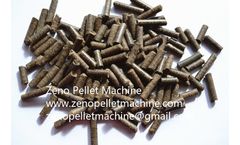Wheat Blends Mixtures Produce Articles & Analysis
31 articles found
The DNA sequence of a gene responsible for resistance to a devastating virus in wheat has been discovered, providing important clues for managing more resistant crops and maintaining a healthy food supply. Wheat crops in the Americas, Asia, Europe, and Africa are regularly damaged by wheat yellow mosaic virus (WYMV), and there is a high demand for wheat varieties or cultivars that are resistant ...
In the past few decades, agricultural land has been largely lost, and increased salinity in soils around the world has received much attention. Nowadays, nearly 8% of the world's arable land can no longer be used for crop cultivation due to salt pollution, and more than half of the world's countries are affected. Wheat is the second largest grain grown after corn and grows more on Earth than any ...
The so-called fruit and vegetable processing means to maximize the nutrient content of the fruit and vegetable through various processing methods, improve the edible value, and make the color, aroma and taste of the processed product more perfect. Make the fruits and vegetables achieve the purpose of long-term preservation, durability, and access at any time. Further improve the commercialization ...
At the 2021 Cool Farm Alliance Annual General Meeting, Hal Hamilton, Co-Founder at the Sustainable Food Lab, moderated a thought-provoking session on “Enabling change – leverage points to scale regenerative agriculture and GHG emission reductions” with leading stakeholders from the agri-food industry and members of the Cool Farm Alliance: Luc Beerens, Global Sustainable ...
Through scientific and technological progress and innovation,a variety of usage have been found for the comprehensive development and utilization of crop straw on the world, especially in developed countries. In addition to the traditional crushing of straw and returning it to the field as organic fertilizer, there are also other usage like grass pellet maker machine, straw vaporization, straw ...
Abstract A field experiment was conducted during the Kharif season of 2018-19 at Rice Research Station Bahawalnagar on the calcareous sandy loam soil to assess the effect of foliar application of boron on growth & yield components of rice varieties (Kissan & Punjab Basmati 2016).The foliar application of boron aqueous solution was used as treatments comprised of control, 0.5kg/ha, ...
First of a five year trial producing wheat at reduced rates of NPK (50% to 75%). At Northam in the central wheatbelt of Western Australia in 2013, wheat cv. Eradu was sown into a pasture paddock to evaluate the effects of various rates of fertiliser in combination with Hibrix BB. Agras fertiliser was banded below the seed at sowing at 0, 25, 51, 75 or 99 kg/ha whilst Hibrix BB was applied to half ...
This seventh-generation family business uses farm management software to learn their annual cost of production on an accrual basis. The accessible, easy-to-use platform creates time-saving FSA reporting, crop traceability and historical data spanning generations. Read on to learn why the family attributes knowing their cost of production to helping them stay on farm to continue their family ...
People concerned about their water footprint often make an effort to turn the faucet off quickly, take shorter showers, and cut back on watering the lawn. While these efforts are important, they ignore one of the biggest water-use culprits found in virtually every household: food and beverages. The production of food and beverages is a water-intensive process. According to the Water Footprint ...
North China Plain is one of the most important grain-producing areas in China. Because of unevenly distributed precipitation in this semi-arid area, crop production largely relies on underground blue water (UBW) to irrigate, overexploitation of which causes a lot of environmental problems. In this paper, we first defined the representative division of winter wheat irrigation water production ...
This study estimated the gains of virtual water, Phosphorus (P) and Phytic Acid (PA) through rice and wheat import to Ghana for the period 1998–2005, and assessed the implications of increasing rice import coupled with declining domestic production for food security. The total virtual water of Ghana associated with rice and wheat import for the study period was 5574 Mm³, while the total P and PA ...
The role of risks in the adoption of low–input wheat production in Switzerland is investigated using farm–level panel data. Due to governmental support with environmental payments, low–input wheat production is found to be on average more profitable. However, low–input production is also more risky, in particular due to higher yield variability. The here presented analysis reveals that these ...
For most of the time that human beings have walked the earth, we lived as hunter-gatherers. The share of the human diet that came from hunting versus gathering varied with geographic location, hunting skills, and the season of the year. During the northern hemisphere winter, for instance, when there was little food to gather, people there depended heavily on hunting for survival. Our long history ...
Original story at MIT News An MIT team is providing new understanding of the growing interconnections among three critical resources: energy, water and food. The work focuses on Pakistan's Indus Basin, where irrigation water is increasingly pumped from underground, a practice that is intensifying a preexisting shortage of energy. Using new and existing data plus statistical models, the ...
The world produced 2,241 million tons of grain in 2012, down 75 million tons or 3 percent from the 2011 record harvest. The drop was largely because of droughts that devastated several major crops—namely corn in the United States (the world’s largest crop) and wheat in Russia, Kazakhstan, Ukraine, and Australia. Each of these countries also is an important exporter. Global grain ...
Improved wheat grains storage management SmartScan25 was installed at the Israeli large flour mill to improve wheat grains storage management, save costs and reduce material losses. Israeli Mills Ltd, located in the city of Tel Aviv, is one of the leading local flour providers. The mill produces various types of wheat products such as: bran, white flour, semolina and more, for local use. The ...
The Arab countries in the Middle East and North Africa make up only 5 percent of the world’s population, yet they take in more than 20 percent of the world’s grain exports. Imports to the region have jumped from 30 million tons of grain in 1990 to nearly 70 million tons in 2011. Now imported grain accounts for nearly 60 percent of regional grain consumption. With water scarce, arable ...
World agriculture today faces pressure from many sources. On the production side, the amount of unused arable and worldwide has dwindled. Overworked soils are becoming eroded and degraded, and overpumped aquifers are being depleted. Meanwhile, as the global population grows and increasing biofuel production converts grain into fuel for cars, demand for food continues to climb. In Chapters 2 and 9 ...
Managing dual-purpose wheat is complex because of the tradeoff relationship between cattle (Bos taurus) and wheat (Triticum aestivum L.) production. Stocking rate (SR) and planting date are key decision variables of the dual systems. The objective was to develop decision support information that help farmers boost profits by adapting SR and planting date to particular production and market ...
Root-lesion nematodes (Pratylenchus neglectus and P. thornei) are widely distributed and substantially reduce grain yields in wheat (Triticum aestivum L.)-producing regions of the Pacific Northwest (PNW). The objective of this research was to determine if wheat and barley (Hordeum vulgare L.) cultivars differ in tolerance to these nematode species. Field experiments were conducted by comparing ...














